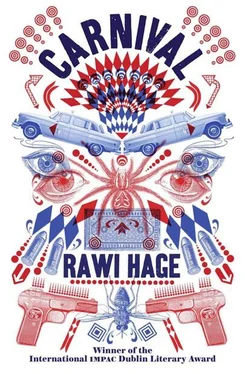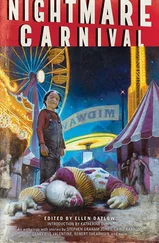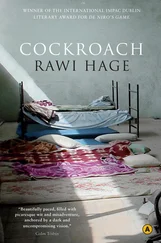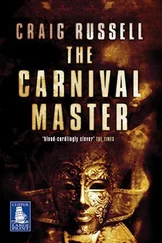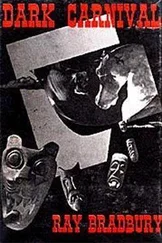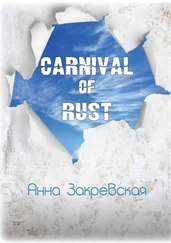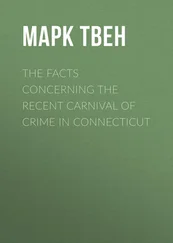CRIMES (AGAIN)
MORNING. AFTER THE burial of the latest victim of the taxi killings, a psychiatrist was slain inside his clinic as he was about to leave his office. The doctor’s coat was found hanging behind the door. According to the police report, the patterns of blood on the coat suggested that the killer had worn it while he slashed the doctor’s throat.
Many of the patients who were being treated by the psychiatrist got sick reading the news. A computer was missing, as well as a radio, two hundred dollars, and a box of Cuban cigarillos, but the rest of the place was untouched except for the blood that had splattered all over the room. The police confiscated all the doctor’s files as part of the investigation. Patients and privacy advocates protested, stating that the police were violating citizens’ rights to privacy.
A PROMINENT CEO was found shot next to his car, in the parking lot of the gym where he worked out three times a week.
The CEO was the head of a large mining company. A few years before, the company had been involved in arming rebels in an African country in order to overthrow a left-leaning regime that had demanded the nationalization of the mining company. After the scandal, the then-CEO resigned and a younger CEO, by the name of Edward Stain III (in certain disco circles known as Eddie), was promoted to the job. The young CEO’s first proposal to the shareholders was to hire a PR company to conduct a campaign that would highlight the company’s social responsibility programs, including job creation for third-world workers and new, advanced environmental technologies to foster better and more environmentally conscious mining practices. The “step technique,” one of the new techniques was called, since the excavation and stripping were to be done in a series of steps that would allow future plants and new vegetation to eventually cover the sites. The CEO invited environmental groups to discuss the new procedures.
At the funeral of Mr. Stain III, many honourable guests were in attendance, and the populist mayor promised to henceforth be even tougher on crime. The late CEO had left behind two beautiful daughters and a wife.
THE NEXT DAY a professor of political science at the local university was found, with his wife, mutilated and burned in the woods outside the city. The camping equipment and clothing of the victims had all been stolen. The couple, it was determined after forensic analysis, had been chained together and stabbed. In a gruesome statement, the police revealed that acts of cannibalism had been performed. Some of the limbs had been barbecued on the spot, and traces of human saliva were detected on the victims’ arms and thighs. The car of Edward Stain III, the young CEO, was found parked in the woods close to the scene. It was clear that the killer or killers must have switched cars. He, she, or they had arrived in the first victim’s car and left in the second. Both crimes appeared to have taken place on the same day.
The news about cannibalism caused renewed panic and debate all over the city. It even made the international news. Experts on cannibalism and satanic rituals were seen on every channel. A panellist who said that the act of cannibalism was justified in times of famine was condemned by the religious establishment, and the news channel was inundated with complaints and threats. The expert later stated that he had merely been referring to human history, and that cannibalism was an undeniable part of our past. He stated that there was proof of cannibalism by First World War soldiers, not to mention incidents as recent as the Vietnam War and after certain plane crashes. Journalists expanded on the topic, chairing panels on devil worshippers, Masonic lodges, and the demonization of Jews in Europe through false accusations by the Church and the Nazis alike.
In a lengthy obituary in one of the local newspapers, the professor was remembered for many of the conservative policies he had helped introduce through the current government. He had been, behind the scenes, an effective adviser on such policies as the abolishment of the gun registry, the dismantling of the census, and other deep cuts to the governmental bureaucracy. The life and work of the victim stirred another debate over the role of academia in the government, and vice versa. Political talk shows on radio and on television suddenly began to question politicians’ competence. Is the prime minister a mere front for ideologues and think tanks? Who are the brains that run this country? What is the role of academics and policy-makers in the forming of our values?
NEITHER THE INVESTIGATORS nor the journalists could find any kind of link connecting these latest victims to one another. Judging by their life histories, one could easily assume that the killings had a political motivation; yet, since the murders appeared to be the work of a psychopath or a serial killer, the focus of the investigation fell on the psychiatrist’s files, with a secondary focus on patients with possibly radical political affiliations.
The detectives estimated that, out of hundreds of bureaucrats and government employees who had been the doctor’s patients, seventy-five percent were on antidepressants and anti-psychotic medicines. Many at police headquarters began to joke that the country was being run by drugged-up zombies and potential mass murderers masquerading as bureaucrats. A chief investigator, discussing the case with his superiors, lit a cigar and said, What happened to going to a bar and getting drunk, getting a prostitute and waking up to go to work in the morning? No one can handle a drink anymore. Pills are the easy way out, and that is why this country is going down the tubes.
The head of the Episcopalian Church demanded the abolishment of the Carnival, stating that its pagan origins were an incitement to debauchery and violence. The Catholic Church was in a precarious position: carnivals had a long history in Church functions and, through the ages, these festivities had never been suppressed or condemned. In an eloquent act of defence, the spokesman for the Catholic Church invoked Francis of Assisi, who had spoken of “spiritual joy” and been known to call himself and his companions “God’s jugglers.” The spokesman blamed a few decadent elements for transforming the Carnival from a community affair into a drug-infested gay pride parade that was taking over the decent essence of the celebration.
When a task force was formed, ultimately recommending that the city shut down the Carnival, a counter-committee of local merchants, large corporations, and sponsors threatened to withhold their financial support for the mayor during the upcoming election, should the task force’s recommendations be followed.
THE LINK BETWEEN the killing of the taxi drivers and the murders of the psychiatrist, the professor, and the CEO continued to baffle the investigators. Ultimately, they came to suspect that two separate serial killers were at work. While the gruesome Corporate Murders, as they became known, had a clear psychotic element to them, the taxi murders were of a different nature. Those killings were not as spectacular and deranged as their corporate counterparts.
Yet both cases remained very puzzling to the police. In the case of the Corporate Murders, though, one breakthrough came from the fact that the killers had been sloppy and reckless. Security cameras had captured images of two men driving the CEO’s car out of the gym parking lot. Detectives were able to match a set of fingerprints in the car to those of a minor who had previously committed a felony.
TWO SIXTEEN-YEAR-OLD BOYS by the name of Tammer Gonzalez Othman and Billy Bloom (known as Skippy the Bug) were identified as murder suspects in the corporate cases. They were caught and dragged to police headquarters for questioning.
Читать дальше
